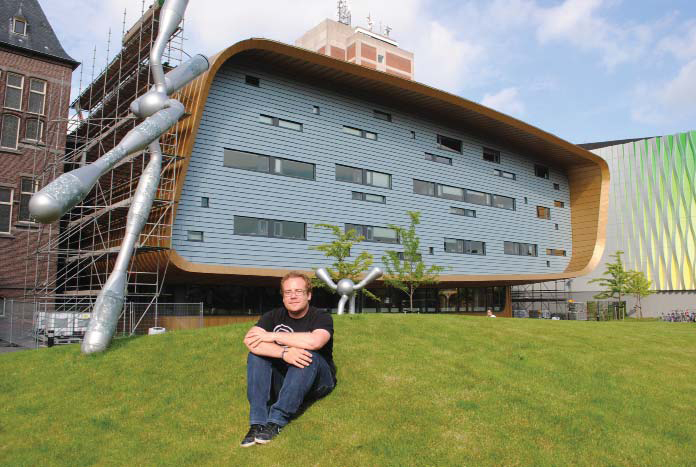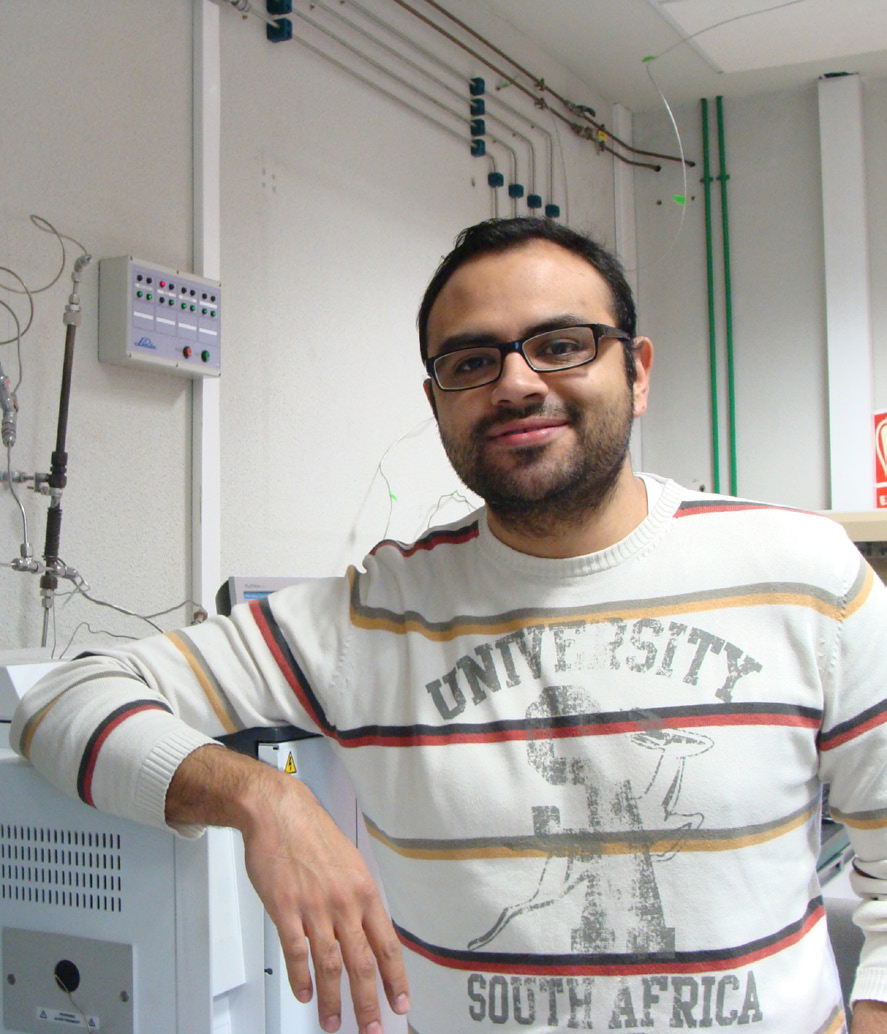The researchers Alejandro Mata Cabana, Óscar Hernando Laguna Espitia and Gabriel Lozano Barbero, who have been linked for several years to the Centro de Investigaciones Científicas Isla de la Cartuja (cicCartuja), have been awarded the Extraordinary Doctoral Prize granted by the University of Seville to the best doctoral theses presented in each academic year.
Alejandro Mata, who worked at the Institute of Plant Biochemistry and Photosynthesis (IBVF) between 2004 and 2011, has been recognised for a study on the mechanisms of enzyme regulation in cyanobacteria. Óscar H. Laguna, a member of the Institute of Materials Science of Seville (ICMS) between 2007 and 2011, was awarded for his research on the elimination of carbon monoxide remaining in the hydrogen streams produced when transforming alcohols, while Gabriel Lozano, also a member of the ICMS for four years, received the award for a study on the optical properties of photonic materials manufactured using the vertical deposition self-assembly technique.
Regulation in cyanobacteria
In his doctoral thesis, Alejandro Mata has focused on the study of redox regulation by thioredoxins in a type of unicellular cyanobacterium, Synechocystis sp. PCC 6803, which serves as a model organism. Thioredoxins are proteins that act as antioxidants, facilitating the reduction of other proteins. Although this is fundamental research, this study also contributes to the development of future applications, such as in the field of biofuel production from cyanobacteria. The thesis, entitled ‘New insights into thioredoxin-dependent redox regulation in the cyanobacterium Synechocystis sp. PCC 6803’, was presented at cicCartuja at the end of 2010, and was supervised by Professor Francisco Javier Florencio Bellido and CSIC Senior Scientist Anna Lindhal.
D. in Biology with European mention, Alejandro Mata is currently doing a postdoctoral stay in the Dutch city of Groningen, specifically at the European Research Institute for the Biology of Aging (ERIBA), where he uses the model organism C. elegans to study protein aggregation related to neurodegenerative diseases. Previously, she worked for seven years at IBVF and enjoyed a grant from the European Molecular Biology Organization (EMBO), thanks to which she completed a three-month stay in the laboratory of Dr. Peter Nixon at Imperial College London.
Hydrogen purification
In addition, the University of Seville has awarded the Extraordinary Doctorate Prize to the Colombian scientist Óscar H. Laguna, for the thesis entitled ‘Preferential oxidation of CO in the presence of H2: design of catalysts based on CeO2 and application to microreactors’. Directed by Professor of Inorganic Chemistry at the University of Seville José Antonio Odriozola and CSIC Research Scientist Miguel Ángel Centeno, this research deals with the elimination of the carbon monoxide (CO) remaining in the hydrogen streams produced when transforming alcohols. These streams are used to power fuel cells, which in turn will produce electricity.
This study on the purification of hydrogen streams was also awarded the Seville City Council Doctoral Thesis Prize for its dual theoretical and practical status. Óscar H. Laguna, who is currently furthering his training at the University of the Basque Country, contributes with this research to optimising the use of hydrogen as an alternative energy source, with less polluting waste. The application of this type of studies has repercussions on the improved performance of fuel cells, the electric batteries that work from hydrogen and which, due to their versatility, can be used with promising results in mobile devices or in the automobile industry.
Properties of artificial opals
Finally, the University of Seville has awarded a third scientist from the CicCartuja, Gabriel Lozano. In his doctoral thesis, the ICMS researcher has focused on the study of the mechanism of self-assembly by vertical deposition and the optical properties exhibited by photonic materials manufactured using this technique. These materials, known as artificial opals, are used for the fundamental study of the interaction of light with three-dimensional periodic structures and for the development of countless applications. The thesis, entitled ‘Analysis of the growth and high-energy optical properties of colloidal photonic crystals’, was presented at cicCartuja at the end of 2010, and was directed by CSIC Research Scientist Hernán Míguez.
Gabriel Lozano is currently doing research in the Netherlands, at the Atomic and Molecular Physics Research Centre (AMOLF), where he is studying how to modify the emission of different luminescent materials using metallic nanostructures. Previously, he worked for four years at the ICMS and enjoyed a CSIC predoctoral fellowship, thanks to which he completed stays at the University of Buenos Aires and the University of Toronto, as well as at the European Research Centre for Nonlinear Spectroscopy (LENS), based in Florence.


Three young researchers from cicCartuja receive the Extraordinary Doctorate Award



